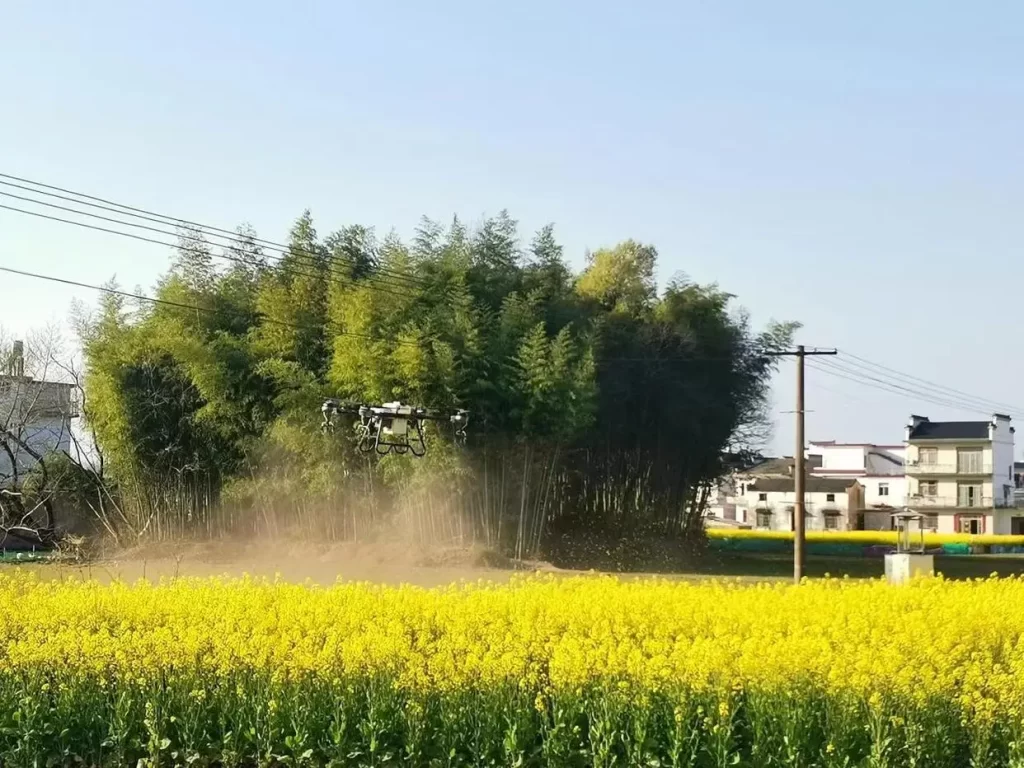As is well known, most rice cultivation in the United States is done through dry direct seeding, and most of it is done through aerial seeding, which is highly efficient. In recent years, domestic agricultural drones have developed rapidly, and various regions are demonstrating and promoting rice drone aerial seeding, as well as supporting agricultural machinery and agronomic technologies in various production processes such as pesticide and fertilizer application. It is a rapidly developing and simplified rice planting technology in recent years. Rice drone aerial seeding is 30-50 times more efficient than traditional manual seeding and 12-25 times more efficient than ground direct seeding machinery. Taking into account factors such as fertilizer utilization efficiency and yield, this technology has an average cost saving and efficiency increase of 100-150 yuan per acre. This technology can solve the problems of uneven traditional manual sowing and easy vehicle sinking of ground live broadcasting machinery, and has positive significance in alleviating labor conflicts during busy farming hours, promoting production and income increase, and developing moderate scale operations. Let’s take a look at the key points of rice drone aerial seeding lightweight and simplified planting technology.
Choose a multi-purpose agricultural drone with high level of intelligent operation, such as intelligent control, breakpoint endurance, automatic obstacle avoidance, leakage warning, trajectory recording, real-time monitoring of sowing, etc., high load capacity, strong endurance, high stability and safety, and functions such as sowing, fertilizing, and pesticide application. It is recommended to use a load capacity greater than 20 kilograms, a single battery life greater than 15 minutes, and equipped with a mobile charging station.
According to different aircraft models, two methods can be adopted: random sowing and precision drilling. Before sowing, use satellite positioning to collect field information, plan the operation route, set parameters such as the amount of seeds used per acre, flight height, etc., and test the seeding amount to meet the requirements before starting the sowing operation. The sowing amount is determined according to the variety characteristics, soil fertility and other factors. Generally, the sowing amount of hybrid rice is 1.5-2 kg/mu, that of conventional indica rice is 2.5-3 kg/mu, and that of japonica rice is 4-5 kg/mu.
The aerial seeding height of the sowing type aircraft is 2-3m and the broadcasting range is 6-9m. During operation, the uniformity of sowing should be strictly controlled. If necessary, the sowing amount can be reduced by half and the sowing can be completed in two stages. The two operation routes intersect vertically to avoid the intersection of the sowing and dropping areas on the round-trip routes, which may lead to uneven sowing. The aerial seeding height of the drill type aircraft is about 0.5m, and the width of the seed falling within the row does not exceed 8cm, with a row spacing of 20-30cm. When precision drilling, it is necessary to control the height of the operation to maximize the concentrated drop of seeds on the centerline within the row.







Please sign in to comment
register